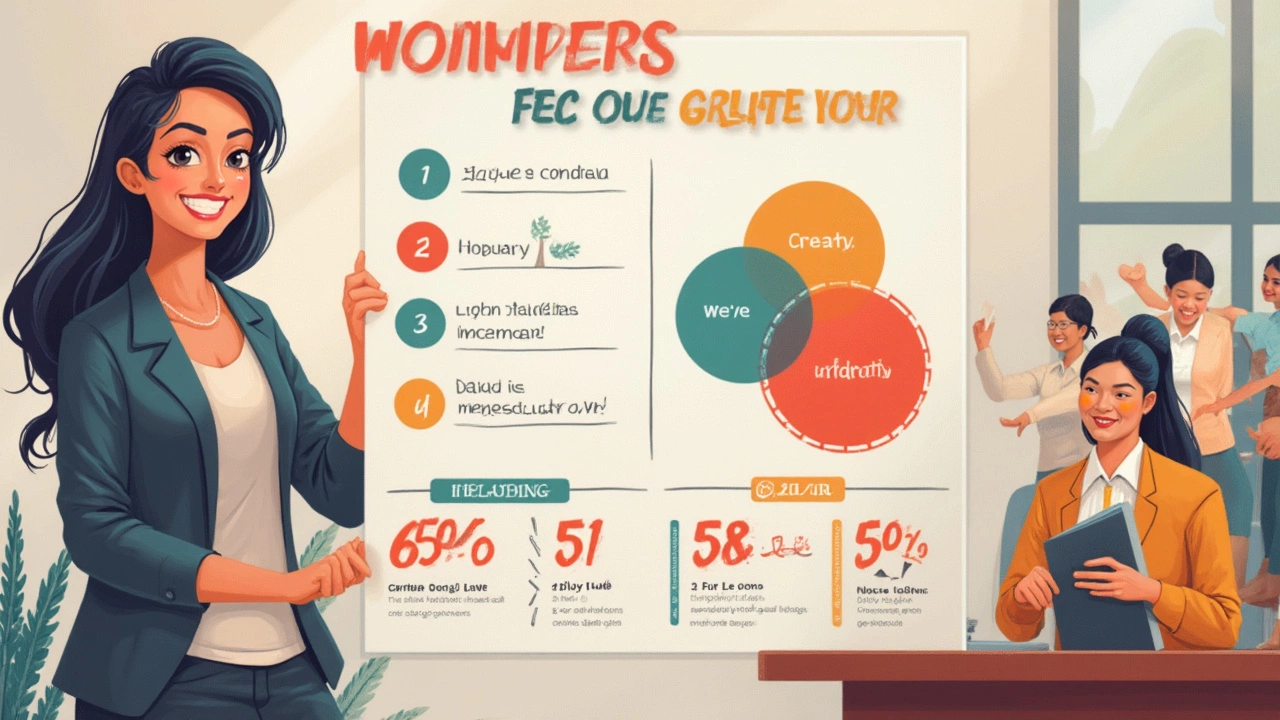You probably know that online learning isn’t just about convenience anymore—it’s about who’s offering genuinely useful skills, helpful support, and real career boosts. Sounds simple, but with the explosion of e-learning sites, it gets wild out there fast. So, what does it really mean to pick the best site for online courses in 2025? Money, time, and your future could be on the line, so you want to make the right choice. The game has changed a lot over the last few years, and several big names now have serious competition. The platforms that used to dominate the charts are being pushed to innovate with new tech and collaboration models. It’s not just about watching videos alone in your room—you get project feedback, peer discussions, and sometimes, job referrals. That’s why getting familiar with the standout sites can make a huge difference. Let’s pull back the curtain on what’s worth your attention right now.
How Online Learning Evolved: From DIY to Full Service
Back in the 2010s, online learning mostly meant watching grainy lecture videos on YouTube or sitting through recorded sessions that tested your patience. Fast forward to today—course platforms are giving you smart features like assignments graded by instructors, live project reviews, built-in discussion boards, and automated feedback. The giants like Coursera, Udemy, and edX aren’t resting; they’re rolling out AI learning assistants, certificates with direct links to employers, and even custom degree pathways. Just five years ago, community features meant little more than a boring forum, but now, places like Skillshare or MasterClass host live workshops you can actually join every week.
The way courses get made has also shifted. Rather than a handful of universities or “gurus” uploading courses, today you get industry experts, influencers, even brands (think Google or IBM) creating structured paths that guide you from the basics straight to real-world job tasks. According to a recent Class Central report, over 60% of learners in 2025 now look for online programs that connect them with employers, not just knowledge dumps. Peer learning is another big win: it’s way easier to find study groups, feedback partners, or project teams online now. Sites have integrated Slack-style chat rooms, optional Zoom groups, and hackathons where you can show off what you built. Basically, the world of e-learning is now social, interactive, and increasingly job-focused—the days of “just watch and hope for the best” are fading fast.
The Top Online Course Sites Compared
This is where the rubber meets the road: which sites stand out—and for what types of learners? Let's break down the heavy hitters and what each brings to the table.
- Coursera: Coursera still leads for those big, recognized certificates and degrees. You can take a machine learning sequence from Stanford or a Google IT Support course that leads to real interviews. Their platform now includes mentorship and live office hours if you pay for guided projects. Courses often have assignments checked by real humans (not just robots), which helps retention a ton.
- Udemy: Wildly popular for cheap, one-off courses covering everything from Python to watercolor painting. There’s no monthly fee; you just buy what you need. Its sheer variety is unmatched, though quality control can be patchy. Look for user ratings and recent updates to make sure you’re not getting yesterday’s news.
- edX: edX is a nonprofit backed by Harvard and MIT, so you get tons of free content. You pay if you want a formal certificate or take a full degree (sometimes for a fraction of the on-campus cost). Their courses tend to be more academic—and they’re famous for computer science, engineering, and public health.
- LinkedIn Learning: Slick, business-focused, and integrates with your LinkedIn profile. If you need bite-sized lessons on leadership, Excel, digital marketing, or productivity, this is a great choice, and their courses are lined up with in-demand job titles. Employers even see your updates directly, which is handy for changing careers.
- Skillshare: More creative, hands-on, and perfect if you’re into design, freelance skills, or entrepreneurship. The monthly fee gives you access to everything (which can save money if you plan to jump between multiple topics). Their short workshops and class projects help you build a real portfolio.
- MasterClass: Want to learn from celebrities? This one’s got serious star power—think Gordon Ramsay on cooking, Shonda Rhimes on writing, or Samuel L. Jackson on acting. Less about hard skills, more about inspiration and personal growth. Beautifully shot videos, but not always practical step-by-step learning.
- FutureLearn: Big in the UK and great for humanities, healthcare, and international students. You can find microcredentials or short courses linked with universities or companies in Europe, Asia, and Australia.
- Pluralsight: For IT, programming, and tech certifications, Pluralsight is a go-to. They offer learning paths mapped to industry exams and speed assessments to see if you’re improving.
Across all these sites, keep an eye on refund policies, trial periods, and how easy it is to check reviews or talk to instructors. You want a mix of flexibility, legitimacy, and human support—these aren’t just ‘click and forget’ platforms anymore.
Pricing, Accreditation, and Value for Money
Let’s talk money. You’ll find plenty of free courses, but often, the meatier stuff—graded assignments, feedback, and certificates—comes at a cost. Coursera and edX, for instance, have “audit” versions where learning is free; you pay if you want a certificate or graded work. Think of the audit mode as window shopping: you look around, get a feel, but don’t walk out with the official badge.
Udemy is the wild west price-wise; a course marked $100 often drops to $14 during regular sales. Subscriptions on Skillshare, LinkedIn Learning, and Pluralsight usually run between $20 and $40 per month, often with generous free trials. Ask yourself: will a subscription make you finish more courses (because you paid) or leave half-done workshops in your digital garage? The best value comes from actually using what you buy—one workshop where you ask questions and finish a project is worth ten half-watched videos.
On the credentials front, some sites are stepping up. Coursera, edX, and FutureLearn now offer full degrees (and not airy “nanodegrees”—we’re talking master’s diplomas) at sometimes a fifth of the cost and length of traditional university programs. Companies are recognizing these, especially in tech, business, and design. As of this year, Google Certificates and IBM Data Science badges from Coursera are popping up in real job descriptions. If your goal is career change, not just learning for fun, check that the course provider is recognized in your industry. No one wants to spend months on a badge that doesn’t open doors.
One side note: don’t get seduced by certificates alone. Countless people fill LinkedIn with course completions—what matters is whether you can do something useful with it. Think portfolios, projects, and hands-on demos, not just PDFs.

Tips for Picking the Right Platform (and Sticking With It)
It’s easy to get stuck in “analysis paralysis” when there are hundreds of options and the promises sound huge. Here's how to narrow things down and actually get value from your choice:
- Match the platform to your goal: Learning to code from scratch? Coursera or edX. Freelancing or design? Skillshare. Something short and business-y? LinkedIn Learning. Just want inspiration? MasterClass.
- Try before you buy: Always use free trials or sample modules first. Check video quality, accent of the instructor, discussion features, and whether the style of teaching clicks for you.
- Read user reviews—carefully: Star ratings don’t tell the full story. Look at what real graduates say about outcomes, how up-to-date content is, and whether instructor feedback is fast and useful.
- Don’t overpay for certificates: A prestigious-looking badge is useless if companies in your field don’t recognize it. Google the course + “hiring” to see if employers care.
- Use community features: Discussion groups, peer review, or live sessions can turn an okay course into an amazing one. You’ll stay engaged, actually finish the course, and connect with others doing the same thing.
- Set a routine: Schedule live sessions or project deadlines into your calendar. This is game-changing—people who set reminders are twice as likely to finish (inside info from a Coursera study last December).
- Track progress and apply it: Build something real, even a mini-project. Share it with others. When you make work public, you’ll push harder to get it done—and it’s great for your portfolio or job hunt.
There’s no cheat code—the best online course site is the one that moves you from signing up to actually building and showing your skills. Fancy features and big names are only worth something if they help you move forward.
Stories: Real Users’ Perspectives (and Some Surprises)
No two learners are alike, and that’s what makes hunting for the best online course site so personal. Take Sara, a project manager from Delhi, who tried both Coursera and LinkedIn Learning. She found Coursera great for deep dives into new domains, but LinkedIn Learning’s five-minute lessons helped her quickly upskill for her next job review. Or Raj, a self-employed designer in Bangalore, who joined Skillshare and landed freelance gigs by adding class projects to his Behance portfolio. He says the interactive projects and feedback made the difference.
Then there’s Riya, who joined an edX computer science MicroMasters in 2023 because she couldn’t afford a local university program. She not only saved a ton but also got hired by a remote fintech startup after showcasing her edX projects. What these stories tell us is that “best” depends not just on content, but on support, recognition, interactivity, and—most importantly—whether you use what you learn to get somewhere new.
One thing that catches many off guard: some employers and universities now ask you to explain how you applied your learning outside the course itself. Did you build a tool, run a side project, or teach what you learned to others? The more you think of these sites as tools for doing, not just knowing, the more valuable your investment gets. Don’t just fill up your profile with certificates, build a story around your growth.
It pays to look further than the front page offers and glowing ads. Some communities—like Reddit’s r/onlinecourses—have hidden gems and uncensored reviews that cut through fluffy marketing. Try searching for “hidden gem online courses” threads for real-deal recommendations.
And if you get stuck, remember that even the best platform in the world won’t help unless you actually commit time and effort. Build a tiny routine, pick a topic that excites you, and use peer groups for accountability. The most successful students usually aren’t the most talented—they’re the most stubborn about showing up.
What’s Next for Online Course Sites in 2025 and Beyond?
If you’re curious where things are heading, get this: online learning platforms in 2025 are doubling down on AI tutors, real-time skill assessments, and direct links to hiring events. Coursera and edX are rolling out AI that can grade your projects and help when you’re stuck—no more waiting a week for answers. Meanwhile, sites like Udemy are experimenting with AR and VR, so don’t be surprised if you’re “in the room” with an instructor someday soon.
There’s also a wave of micro-scholarships tied to course completion. Some platforms, like Pluralsight and LinkedIn Learning, now offer “skill badges” that automatically update your LinkedIn or GitHub pages. It’s about proving you can do, not just watch. Universities and employers are partnering directly with sites to create custom courses that meet hot job demands. Flip side? Quality is getting more uneven, so it’s doubly important to check who made the course, if it’s regularly updated, and what previous students actually did after finishing.
In short, the best site for online courses in 2025 is the one where you’re not just a passive observer but an active builder, networker, and problem solver. So, get clear on your goal, pick your platform, and go make some noise. The opportunities are huge, but only if you take the leap—and back it up with action.



